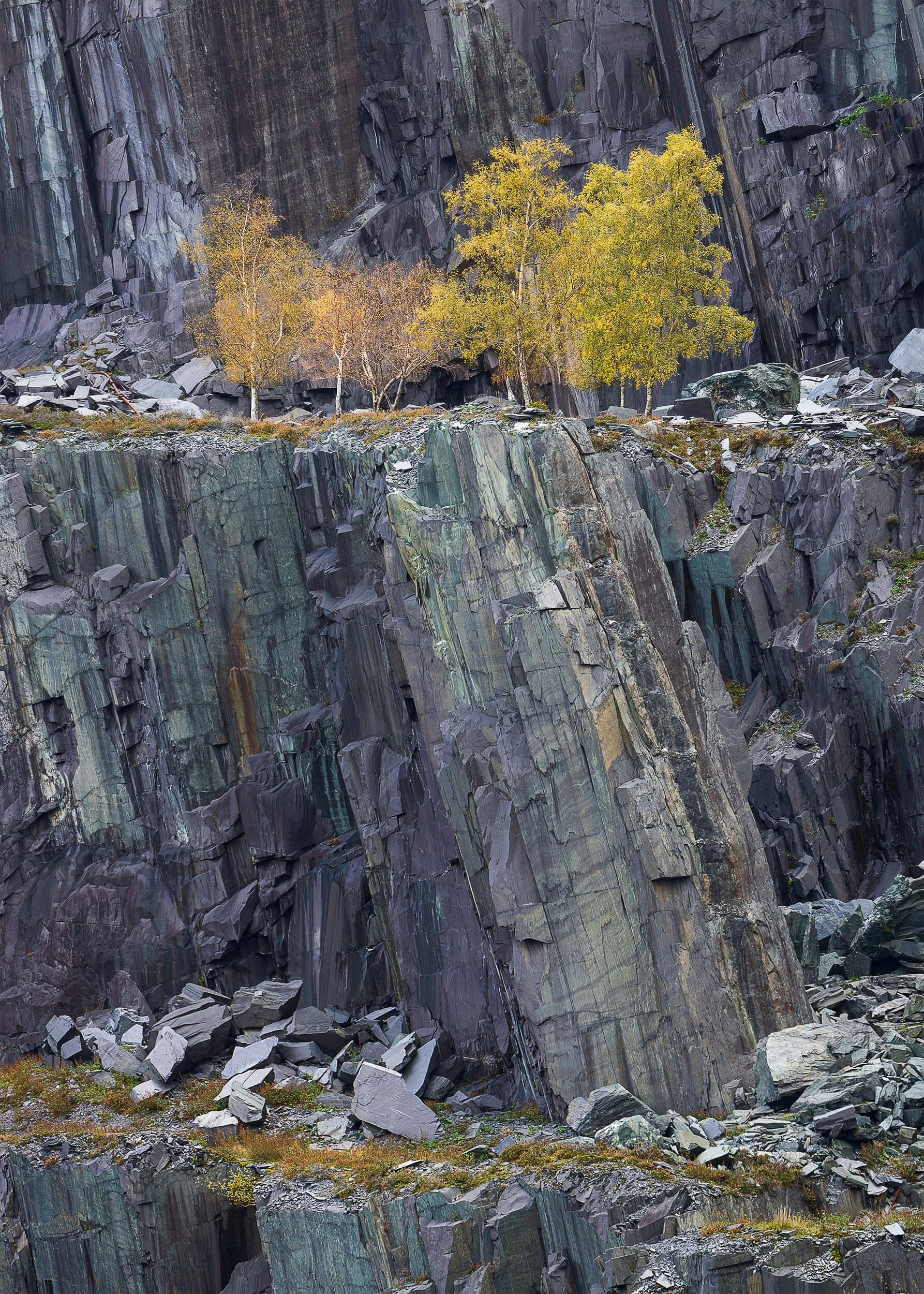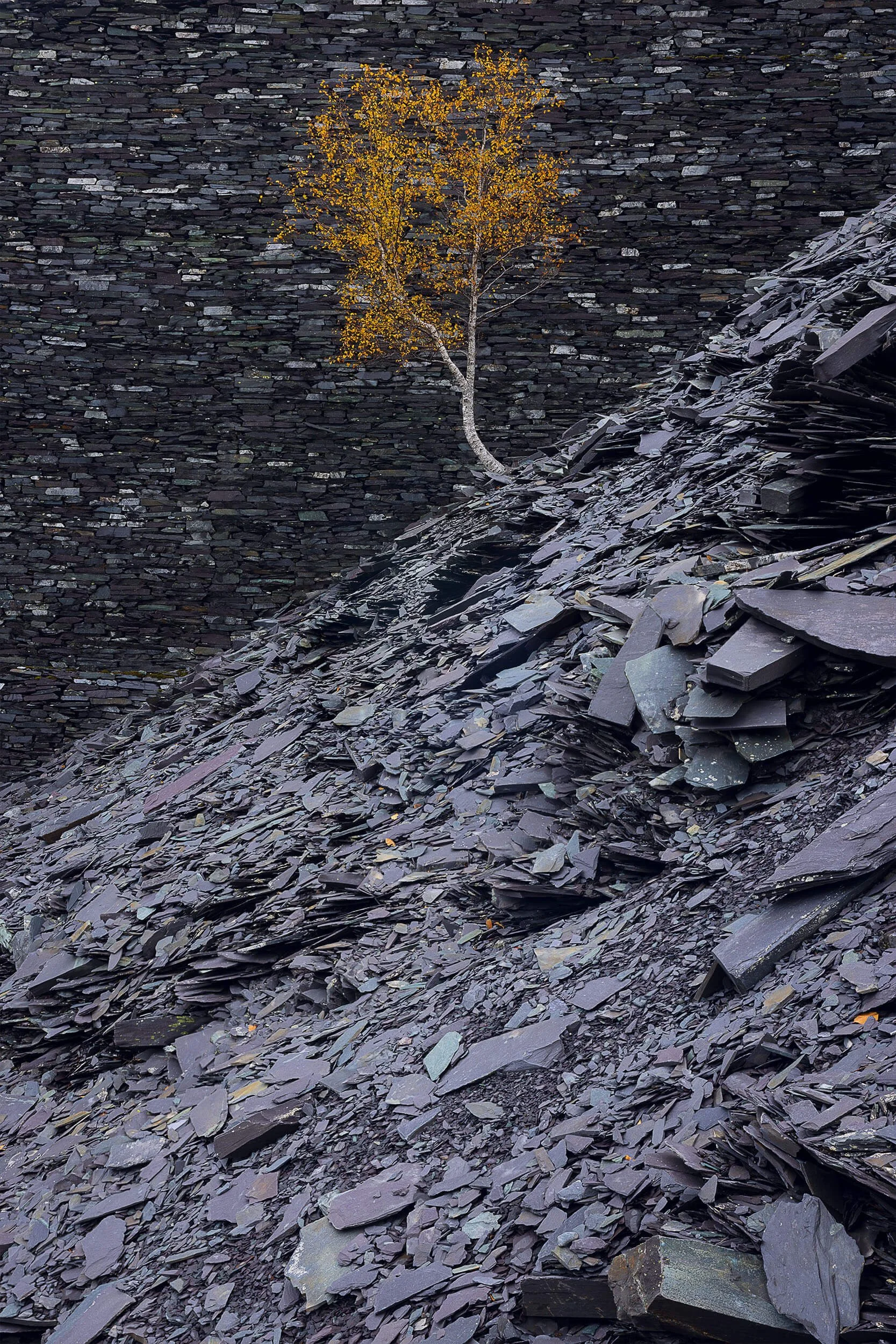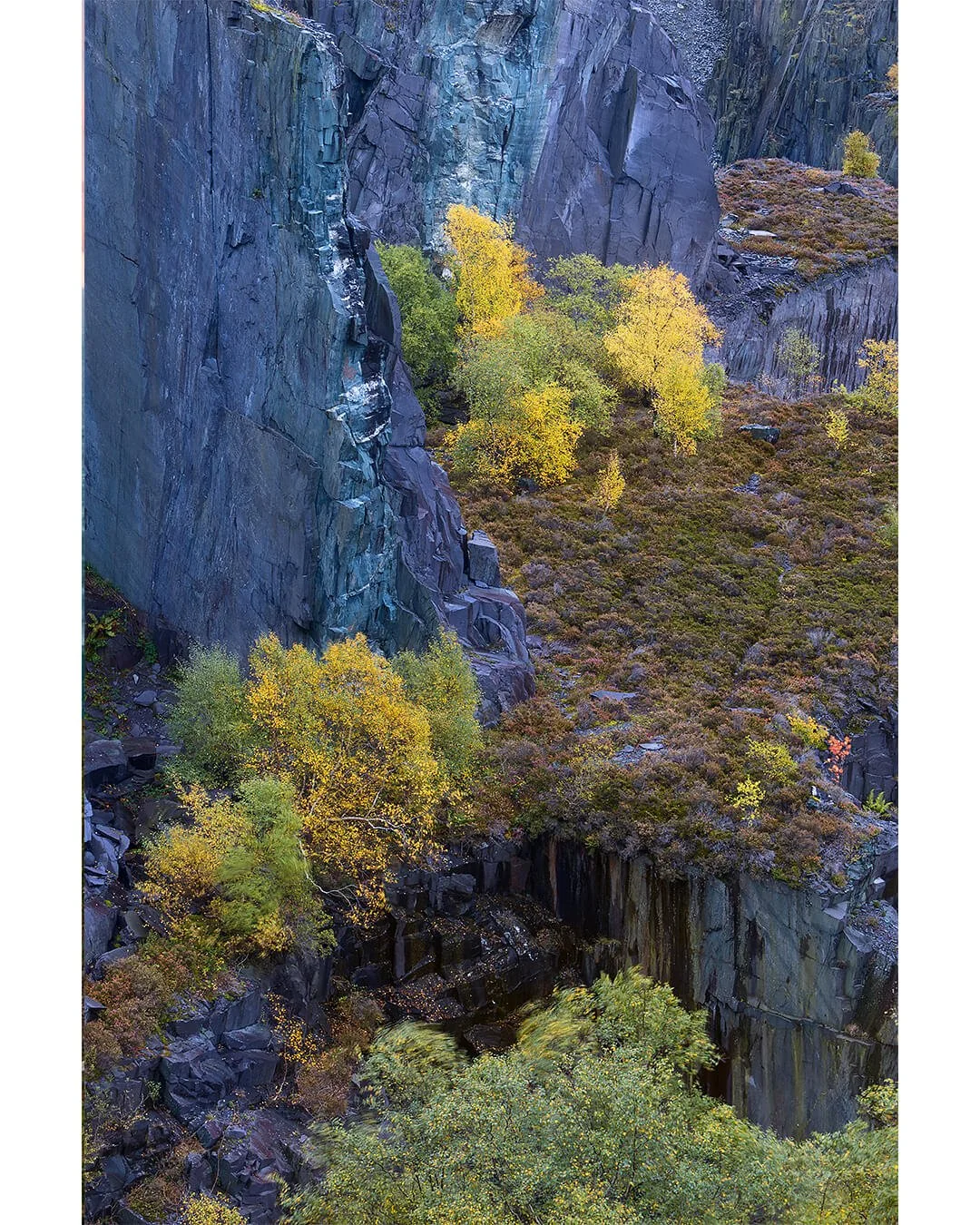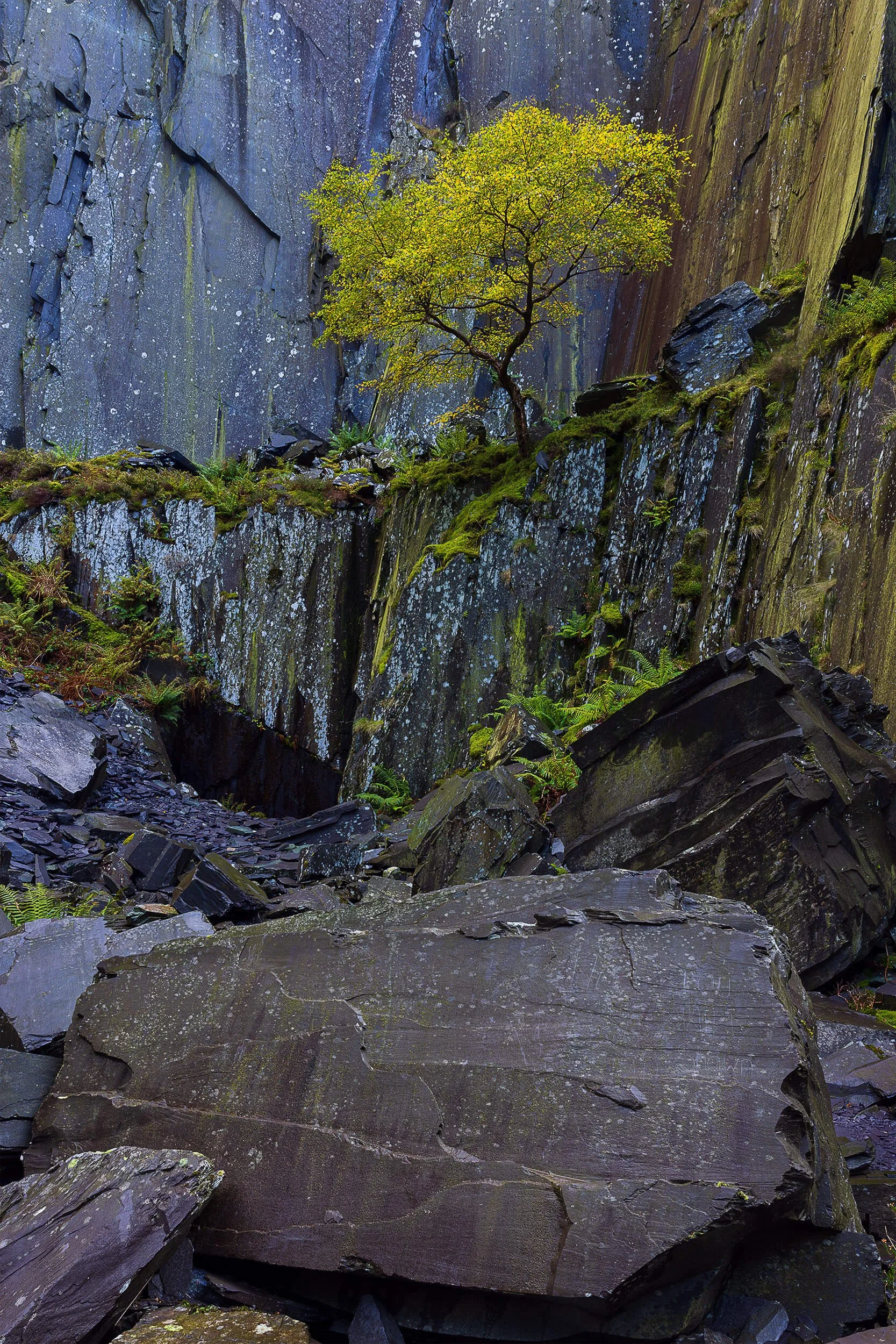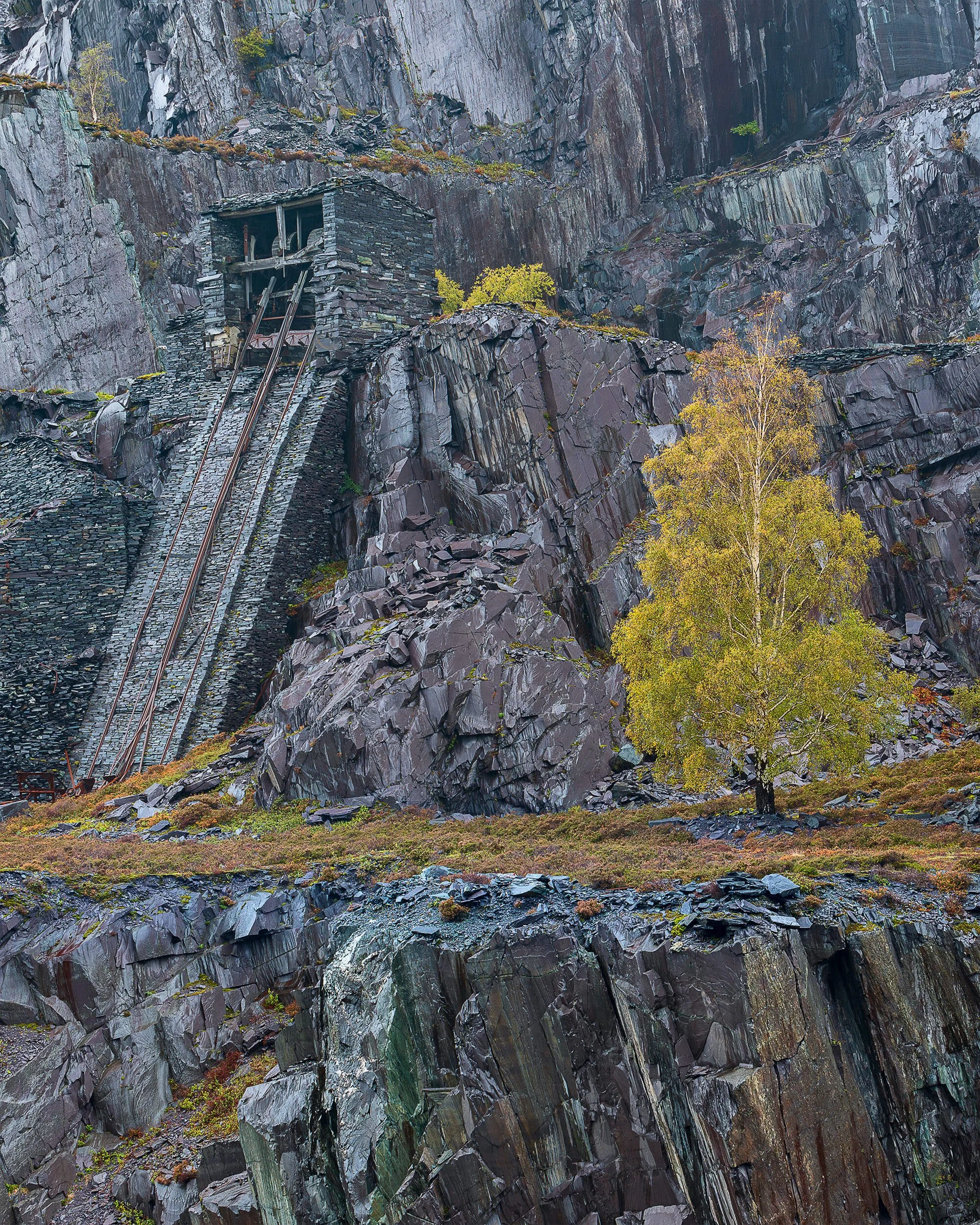DINorwig quarry
Foreword
Nestled in the rugged heart of Snowdonia lies Dinorwig quarry. Once the largest slate quarry in the world Dinorwig ‘‘ate a mountain’’ whilst it ‘‘roofed the world’’, this vast industrial endeavour, now a giant wound on the hillside, lies silent and abandoned; a hauntingly beautiful reminder of Wales' industrial past.
As a landscape photographer, the quarry’s mix of subject matter has fascinated me. A place where industrial heritage, dereliction and the beauty of the natural world combine. Experiencing the sheer scale of the workings is mind-blowing; a powerful, bewildering testament to man’s capacity to reshape the landscape.
In some ways, this project is equal parts capturing the raw beauty of the quarry, as it is documentary, given many features of the quarry are fading away with time under the forces of erosion and the natural world.
Lost Cabans
A constant, enduring piece of architecture throughout Dinorwig is the worker’s cabans (or cabins in English).
These dry stone wall huts, constructed from waste slate, are where quarrymen gathered for scheduled workbreaks. But the caban’s were not only for respite from hard labour on the terraces. Each caban was a social and political epicentre for each sinc, where the men working that section of the quarry, discussed religion and politics, sang, read poetry and settled any disputes over their ‘bargains’ — deals cut between the managers and quarrymen over price and quotas of slate to be cut each week.
Many cabans remain visible throughout Dinorwig, however, most marooned high on the terraces cut off from their access tunnels. As single story buildings, these shelters provide a stark visual reference point for the unfathomable scale of the quarry.
LOST CABAN #1
In a towering pit known as Sinc Garret, or colloquially as Australia, a caban sits isolated on a gallery.
The terraces here have been swamped from above by the spoil heaps cascading down from works higher up the mountain
The caban is truly dwarfed by the immensity of its surroundings; a tiny dot lost against the huge sheer grey walls. Everything starts to loose a sense of perspective
ISO xx f/xx XXmm
Lost CaBAN #2
Sinc Bach Briach is totally inaccessible. Having dug deeper and deeper into the mountain’s bowls access tunnels now lie stranded at great heights. It has become a lost world
On slither of a terrace, this sinc’s caban still stands. Sprees of light were sweeping through the sinc. I waited till one illuminated this stranded caban and it’s terrace puncturing the gloom of this deep pit
ISO 100 f/8 1/10s 70mm
LOST CABAN #3
A lone hut visible through a narrow cut between Sinc Isaf Briach and Brac Briach, marking igneous rock
In the left hand side of the frame, you can see an old adit tunnel which led to between the sincs; now marooned several stories up from the base of the workings here
Light raked across the quarry tops picking out the hut, lifting it from the surrounding grey walls which flank it
ISO 100 f/11 1/13s 70mm
TREES of dinowrig
Throughout Dinowrig quarry’s 700 acre sprawl, silver birch and oaks are on a slow march, reclaiming the landscape as nature begins a long slow healing process of covering the quarry’s scars on the landscape.
Isolated trees dot the landscape, bursting out of the seemingly barren spoil heaps, they take on characterful shapes stunted by a lack of nutrients and the harsh winds. In autumn, the yellow and orange hues of the tress make a wonderful contrast against rthe drab grey of the slate.
pheonix
A youthful birch emerges from the side of a steep spoil heap. Solitary and exposed, the branches appear to hug the contours of the spoil in an effort to afford itself protection from the elements
BONSAI
Nestled deep in the abandoned sinc of Califfornia resides this youthful birch
Miraculously clinging onto the sheer hand hewn walls, it stretches out to the light above. Rich in autumn colour, the tree was the only colour in an against the deep grey walls
BROTHERS in arms
A small colony of silver birch colonise a section of the lower levels of the quarry, in area known as New York
Most of the trees in Dinorwig are loners, but in these sheltered sections, saplings and seedlings have the chance to endure and start to form the kernels of woodlands
Fruit of the spoils
A birch finds shelter against the walls of one of the quarry’s inclines. The towering dry stone walls providing protection from the valley wind and allowing the russets of autumn to cling on a little while longer.
GALLERY GROVES
TThese galleries offer a fascinating glimpse into the vibrant future of Dinowrig. What was once a stark, barren slate floor has now been beautifully transformed and replaced with a lush carpet of blooming heather. Birch trees have flourished, creating small promising groves in the crevices that once separated the ‘bargain’ sections along this particular level.
triumphant
The rich and vibrant autumnal yellows complimented the blueish hue of the slate
It never ceases to amaze me that anything can grow in this sullied landscape; marked and scarred as it is. And yet here, despite no visible soil to speak of in amongst the ‘overburden’ this tree ha found a spot to thrive.
Loner
A solitary youthful birch springs from a towering spoil heap in Dinorwig quarry.
The size of the waste tips are truly staggering, this particular heap is hundreds of meters high, dwarfing everything around it.
REMAINS
Many vestiges of Dinowrig’s slate works survive today. Machinery and pipework lie scatted among the slate. The ruins of the quarry infrastructure and buidlings stand defying the mountian weather, some in remarkable condition given their age and well over half a century of neglect. Others have fallen apart, now giant piles of slate almost indistinguishable from the waste of the spoil heaps.
Make it stand out
Whatever it is, the way you tell your story online can make all the difference.
Make it stand out
Whatever it is, the way you tell your story online can make all the difference.
grey gold
Sunrise bathes the Snowdonia mountainside in fleeting golden light. This derelict drum house, perched on a giant spoil heap, still in shadow, contrasted wonderfully with the light of the far hillside
Despite the scale of the quarry works the mountain and valley of Snowdonia still dominate over the quarry
TEXTURES
Time and abandonment have created a vast array of textures across Dinorwig. The patina of slate and the many metals within
FERROUS
High up in the quarry, in crumbling cutting sheds, lie the remains of many machines which powered the workshop’s slate saws
Rusting in the wet mountain weather there are many wonderous textures and intimate scenes to be found, such as the patina around the seams and joins of this water tank which fed the steam compressors
Riven
Shards of discarded waste slate lie high up in Dinorwic Quarry's Australia Level.
The right angles betray that these were cut from blocks blown off the rock faces and worked to more manageable sizes ready for the saw mills on this level larger.
I was drawn to both the geometry of the rocks and the heavy lichen stains. The slates grey and blue hues enhanced by the tremendous downpour that was lashing the quarry at the time
Slate & Iron
Runs of rusting cast iron pipes criss-cross the landscape at Dinowric.
These were the lifeblood of the quarry, pumping out water from the pits and carry steam to compressors and machinery. The remaining pipework snakes down gallery walls, flows over spoil heaps and runs through the adit tunnels.
At one time, they were the very veins of quarry’s water system, which are now slowly being eaten by the weather and time






